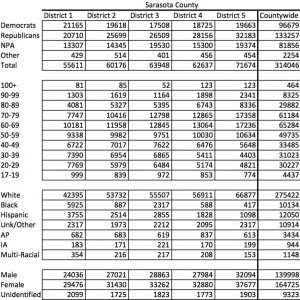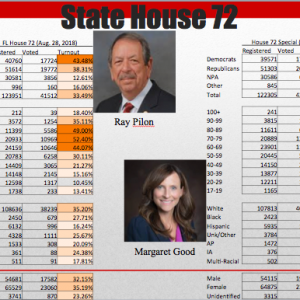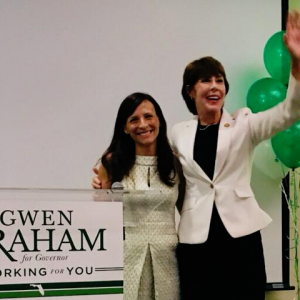These United States of Science
Guest Correspondence
SRQ DAILY
SATURDAY AUG 12, 2017 |
BY DONAL O'SHEA
In the United States, we think of 1776 as the year in which tyranny was overthrown and a new nation founded in freedom was born. Less remarked is that this year marked the beginnings of a nation built on science. Three signers of the Declaration of Independence—Benjamin Franklin, Thomas Jefferson and Benjamin Rush—were scientists, and a number of others were deeply interested in education.
The United States Constitution explicitly encouraged scientific creativity by giving Congress the right to grant patents and copyrights to inventors, writers and scientists. Pockets of individuals interested in scientific inquiry formed learned societies. John Adams, John Hancock and James Bowdoin formed the American Academy of Arts and Sciences in 1780. Governmental and church leaders supported higher education. The nine degree-granting colleges in the colonies in 1776 grew to several hundred by the middle of the next century. The Marine Hospital Service for disabled and retired seamen, formed in 1798, would eventually acquire federal quarantine and research duties and become today’s Public Health Service and the National Institutes of Health. The Coast and Geodetic Survey in 1807 was the first government science agency and would be one of the founding agencies in today’s National Oceanic and Atmospheric Agency.
The Civil War era gave us two of Lincoln’s greatest legacies: the Morrill Act of 1862 and the establishment of the National Academy of Sciences in 1863. The Morrill Act established land grant institutions, which would grow into great research and teaching institutions and which encapsulated a worldview that saw scientific investigation as a boon for agriculture and engineering. The National Academy was a private institution chartered by the United States Congress and charged with providing independent, objective advice to the nation on matters of science and technology. The national Fisheries and Weather Services, formed a few years later in 1870 and 1871, underscored the belief that science was good for the nation and for commerce. Lincoln is the only president to hold a patent.
In the 30 years following the Civil War, the number of colleges and universities would nearly double to about a thousand, enrollments would quintuple to just under a quarter of a million students and bachelor degrees awarded tripled. Professional disciplinary associations sprang up toward the end of the 19th century: the American Chemical Society in 1876, the American Mathematical Society in 1888, the American Physical Society in 1899. In 1887, the National Institutes of Health were formed to investigate causes of epidemics like cholera and yellow fever. In the early 1900s, we figured out how to merge the British model of a college and the German university and a number of our higher educational institutions grew into the greatest universities in the world. Following World War II, the United States established the National Science Foundation to make grants to nongovernmental agencies, such as universities and research organizations, to support the development of pure and applied science. Other government agencies also made grants and contracts, contributing to a highly effective hybrid system in which the government, military, university and private sectors interact. That system undergirds American science.
By the late 20th century, the United States had become a scientific juggernaut. Our nation led the world in higher education. The education of those who grew up on farms or who were children of immigrants produced an incredible array of homegrown scientists. We welcomed scientists fleeing authoritarian regimes, and they added greatly to the scientific strength of the country. Governmental science agencies funded research not so much by directly employing scientists (although some did), but by contracting with universities and research enterprises to pay the portions of salaries of scientists, students, and staff devoted to research. The Public Health Service negotiates with universities an “overhead” rate on grants that pays for facilities, administration, and other project needs. Because government-funded research is conducted without political interference, the most scientifically significant projects tend to receive support. The practice of openly sharing results of such work results in the rapid commercialization of technology and scientific discoveries. This system put the United States at the center of the most scientifically productive time in our species’ history.
Today, less than two decades into this century, every pillar of our scientific infrastructure is under attack. The value of higher education is increasingly questioned, and a first-rate university education is financially out of reach for many of our citizens. We do not produce enough scientists for our own needs, and immigration policies have made it more difficult to fill the gaps with foreign-born newcomers. The tightening of the borders that began after September 11, 2001 has made it difficult for talented individuals from many countries to visit the United States. As a result, many major research conferences—incubators for scientific discovery—must meet outside the United States. A recent proposal to have the Office of Management and Budget eliminate reimbursement to universities and other organizations for so-called “overhead” expenses would pass significant costs of supporting research on to universities. Faced with using student tuition dollars to support research, many universities will decline to sponsor research, and the steady stream of research results the commercialization of which has underwritten our economy will dry up. Proposals to defund key research areas in climate and earth science and clean technologies will, if adopted, not just undercut science in the United States, but will damage our economy. In the former Soviet Union, state-sanctioned rejection of mainstream genetics in favor of the theories of the well-connected Lysenko postponed the development of biological sciences in that country by two decades. The Soviets never caught up and long delay impoverished the nation by crippling the development of agriculture. A similar phenomenon occurred during China’s Cultural Revolution.
In the course of two centuries, we progressed from a nation without the intellectual or financial capital to compete with European institutions to the center of the world in science. We take our scientific heritage for granted, and it is in danger of slipping away. The arrival of new students and the return of others to campuses over the next few weeks should remind us all how important it is not to let that happen.
Donal O’Shea is president of New College of Florida.
« View The Saturday Aug 12, 2017 SRQ Daily Edition
« Back To SRQ Daily Archive








